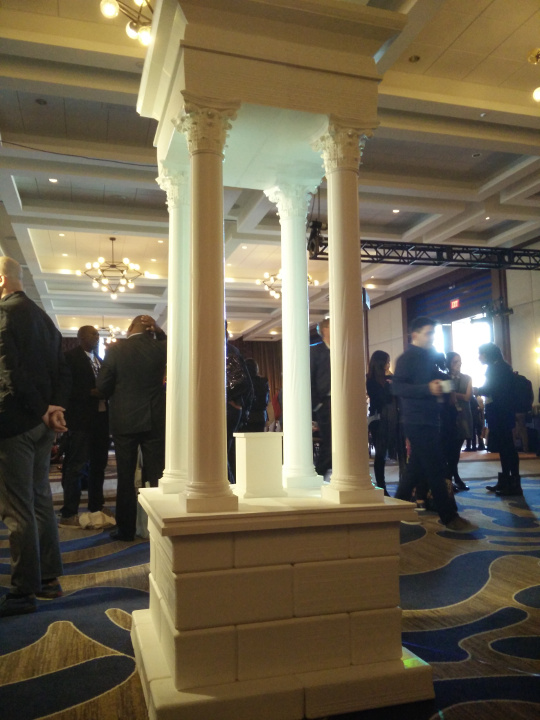Creative Commons Is Resurrecting Palmyra
from the saving-history dept
Creative Commons launched its 2017 Global Summit today with a rather moving surprise: a seven-foot-tall 3D printed replica of the Tetrapylon from Palmyra, Syria. For those who don't know the tragic situation, Palmyra is one of the most historic cities in the world — but it is being steadily destroyed by ISIS, robbing the world of countless irreplaceable artifacts and murdering those who have tried to protect them (the folks at Extra History have a pair of good summary videos discussing the history and the current situation in the city).
Among ISIS's human targets was Bassel Khartabil, who launched Syria's CC community several years ago and began a project to take 3D scans of the city, which CC has been gathering and releasing under a CC0 Public Domain license. He was captured and imprisoned, and for the past five years his whereabouts and status have been unknown. As the #FreeBassel campaign continues, Creative Commons is now working to bring his invaluable scans to life in the form of 3D-printed replicas, starting with today's unveiling of the Tetrapylon — which was destroyed in January along with part of a Roman theatre after ISIS captured the city for a second time.

This isn't the only such project — the Institute of Digital Archaeology and UNESCO unveiled a replica of part of the Temple of Bel in London last year — and these combined efforts are a critical bulwark between ISIS and its goal of eliminating this part of our shared cultural history. You can read more about CC's project — including status updates on the other artifacts, monuments and architecture that they are reproducing — on the #newpalmyra website (at the time of writing it still lists the Tetrapylon as "coming soon", though that will likely change shortly).
Much of this weekend's summit is likely to revolve around the ongoing tension between open culture and intellectual property regimes, but I can't think of a better way to kick things off than with something that even the staunchest copyright maximalist can surely agree with: that the treasures of this 2,000-year-old city belong to us all, their destruction is a travesty, and the ability to preserve them even in some small way is a triumph of technology and the cultural commons.
Filed Under: creative commons, culture, isis, open culture, palmyra, preserving history
Companies: creative commons

